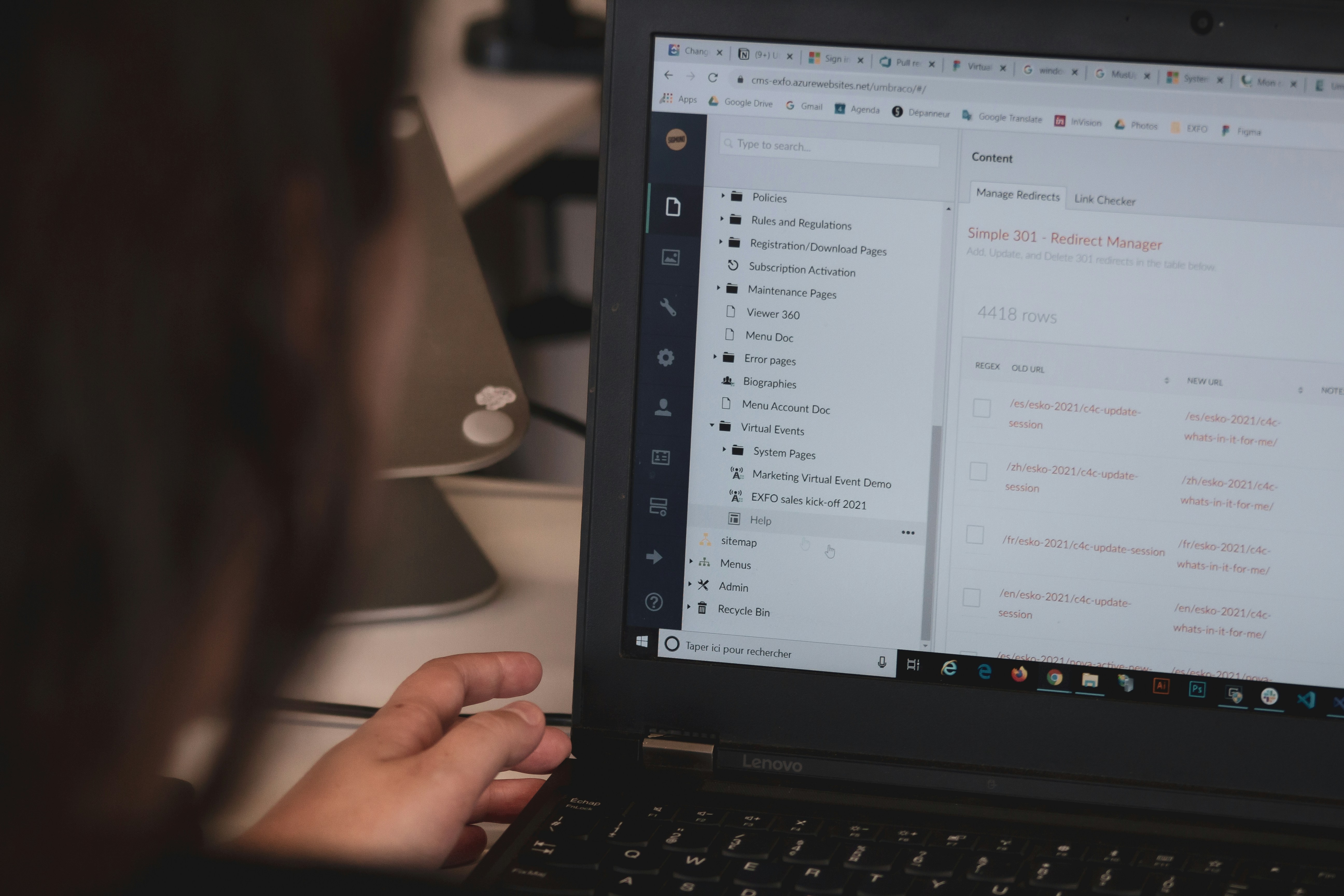Are you stuck deciding whether to choose a Customer Data Platform (CDP) or Marketing Automation (MA)? Customer segmentation analysis is important in this decision-making process. Our blog will help you discover which option to choose that aligns with your business goals and objectives.
You're not alone if you're looking to boost customer engagement through data-driven strategies. Rengage's solution, drive loyalty and growth, is a powerful tool for achieving your objectives, such as deciding between a customer data platform and marketing automation.
Table of Contents
- What are Customer Data Platforms (CDPs)?
- Breaking Down CDP Costs
- Key Cost Considerations for CDPs
- Implementation and Ongoing Costs
- Hidden Costs to Watch Out For
- Return on Investment (ROI) of CDPs
- Alternatives to CDPs and How to Choose the Right One
- Create Personalized Experiences That Drive Loyalty and Growth with Rengage — Book A Free Demo Today
What Are Customer Data Platforms (CDPs)?

Customer Data Platforms (CDPs) act as a centralized hub, unifying customer data from various sources like:
- Website interactions
- CRM systems
- Email marketing platforms
- Loyalty programs.
This unified profile provides a holistic view of each customer, enabling marketers to understand their preferences, behavior, and journey across touchpoints.
Benefits of Using a CDP
360-degree Customer View
CDPs eliminate data silos, offering a complete picture of your customers. This empowers you to personalize marketing campaigns and tailor messaging for maximum impact.
Omnichannel Marketing
CDPs enable consistent messaging across all channels, ensuring a seamless customer experience.
Improved Customer Segmentation
With a rich understanding of your audience, CDPs allow for more precise segmentation, leading to targeted campaigns with higher engagement rates.
Enhanced Customer Lifetime Value
CDPs can significantly increase customer lifetime value by personalizing interactions and fostering stronger relationships.
Considerations When Choosing a CDP
Business Needs
Identify your specific goals, it could be:
- Enhanced customer segmentation
- Improved personalization
- Campaign automation
Choose a CDP that caters to your priorities.
Data Sources
Consider the variety of data sources your CDP needs to integrate with to ensure a unified customer profile.
Scalability
Select a CDP that can adapt to your growing business needs and data volume.
Implementation Complexity
Evaluate the ease of implementation and ongoing maintenance requirements of the CDP.
Related Reading
- Customer Data Infrastructure
- Omnichannel Analytics
- Customer Data Integration
- Predicting Customer Behavior
- Marketing Data Platform
- Customer Data Platform Vs Data Management Platform
- Customer Data Platform Use Cases
- Best Customer Data Platform
- Customer Data Platform Capabilities
- Customer Data Platform Tools
- How To Choose Cdp
What Are Marketing Automation Platforms (MAPs)?
 Marketing Automation Platforms (MAPs) streamline repetitive marketing tasks such as email marketing, social media scheduling, and lead nurturing. They allow you to create automated workflows based on pre-defined triggers and customer actions, fostering efficient communication and engagement.
Marketing Automation Platforms (MAPs) streamline repetitive marketing tasks such as email marketing, social media scheduling, and lead nurturing. They allow you to create automated workflows based on pre-defined triggers and customer actions, fostering efficient communication and engagement.
Key Functionalities of Marketing Automation Platforms (MAPs)
Automated Workflows
Automate email sequences, social media posts, and personalized messages based on customer behavior and lifecycle stage.
Lead Management
Nurture leads by sending targeted emails and providing relevant content to move them through the sales funnel.
Campaign Management
Design, launch, and track marketing campaigns across various channels from a single platform.
Reporting and Analytics
Gain valuable insights into campaign performance, allowing you to optimize future efforts.
Choosing the Right Marketing Automation Platform for Your Business
1. Marketing Goals
Identify your primary marketing objectives:
- Lead generation
- Nurturing existing leads
- Driving sales
Choose a MAP with features that support those goals.
2. Budget
Consider the cost of the MAP and its features in relation to your budget constraints.
3. Ease of Use
Evaluate the user interface and ensure it aligns with your team's technical expertise.
4. Integrations
Choose a MAP that integrates seamlessly with your existing CRM, website, and marketing tools.
No-Code Customer Journey Management
We provide a comprehensive solution for managing and enhancing customer journeys, delivering insights and measurable outcomes with no code. We accelerate your customer journey from onboarding and activation to conversion and churn, enabling customers to unlock revenue from their existing users. With Rengage, you can get insights into your segments, run campaigns with an intuitive journey manager, and get insights to measure how your journeys impact user conversion through our Journey Moments and Journey Builder features.
Book a free demo to learn how to transform customer interactions into personalized experiences that drive loyalty and growth.
Head-to-Head: CDP vs. MAP - Choosing the Right Tool

Focus On Core Differences
Primary Function
When it comes to understanding Customer Data Platform (CDP) vs Marketing Automation Platform (MAP), we first need to grasp their primary functions. A CDP concentrates on unifying customer data and generating insights, while a MAP excels in marketing campaign automation and execution. The CDP's main goal is to create a unified view of the customer, analyzing and leveraging data to provide a seamless experience throughout the customer journey.
On the other hand, MAPs are designed to automate marketing tasks, nurture leads, and launch targeted campaigns across various channels efficiently. The CDP is like a master data repository linking crucial customer details across various systems. At the same time, the MAP is a tool that helps marketers reach out to clients in a personalized way.
Data Management
Another critical distinction between CDPs and MAPs is data management. CDPs offer businesses significant customer data management capabilities, enabling them to collect, manage, and analyze customer data from multiple sources. In contrast, MAPs primarily handle marketing-specific data and use them to drive relevant campaigns across various channels.
CDPs are data repositories that serve as a single source of customer information. This data can be used to provide personalized services to customers, optimize marketing strategies, and increase sales. MAPs, on the other hand, are marketing-focused tools that help marketers segment and target their campaigns effectively.
Personalization
Personalization is a key aspect that sets CDPs and MAPs apart. CDPs allow for deep customer segmentation and personalization across the customer journey. This tool enables marketers to understand customer behavior patterns, preferences, and interests, resulting in more targeted and personalized marketing campaigns.
On the other hand, MAPs personalize marketing campaigns based on predefined segments. This method involves grouping customers based on certain shared characteristics and then tailoring campaigns to those groups. While both types of platforms can help companies create personalized marketing campaigns, the depth of personalization offered by CDPs is significantly greater than that offered by MAPs.
Recommendations
Choose a CDP if your primary goal is to:
- Create a unified view of the customer
- Derive deep insights
- Personalize the customer journey
On the other hand, a MAP would be the better choice if you want to:
- Automate marketing tasks
- Nurture leads
- Launch targeted campaigns across various channels
Understanding your business goals and objectives is essential to make an informed choice between CDPs and MAPs. By doing so, you can ensure that the platform you choose aligns with your priorities and helps you achieve your desired outcomes effectively.
Real-world Use Cases
Ecommerce Personalization with CDP
Imagine a clothing retailer utilizing a CDP to understand customer purchase history, browsing behavior, and demographics. This enables them to personalize product recommendations, email marketing campaigns, and website experiences, which leads to increased sales and customer satisfaction.
Enhanced Customer Service with CDP
A telecommunications company can use a CDP to create a 360-degree view of their customers. This empowers customer service representatives to anticipate customer needs and provide personalized support, improving customer loyalty.
Marketing Automation Platform for Lead Nurturing
A software company can implement a MAP to automate email sequences for website visitors who download a white paper. These automated emails provide valuable content and nurture leads, ultimately driving conversions.
Omnichannel Marketing Campaigns with Marketing Automation Platform
A retail brand can leverage a MAP to launch a coordinated marketing campaign across email, social media, and SMS. Customers receive personalized messages based on their preferences, leading to higher engagement rates.
Additional Use Cases Across Different Sectors
CDPs and MAPs can be highly beneficial across various industries.
- CDPs can be used in finance to enhance cross-selling opportunities by providing insights into customer behaviors.
- In the travel industry, CDPs can help create personalized experiences for travelers based on their preferences.
- CDPs can improve patient engagement in healthcare by offering tailored communications.
Examples Showcasing the Versatility of MAPs
Maps can be used in various ways, such as:
- Webinar marketing
- Event promotion
- Customer loyalty programs
For instance, a retail company can use a MAP to automate personalized loyalty campaigns, engaging customers based on past purchases and preferences.
To learn more about how you can transform customer interactions into personalized experiences that drive loyalty and growth, book a free demo with Rengage today.
Understanding the Limitations of CDPs and MAPs

Potential Drawbacks of Using CDPs
Customer Data Platforms (CDPs) are powerful tools that help businesses unify customer data from various sources. They do have limitations that must be considered before implementation.
- CDPs complexity of implementation. Setting up and integrating a CDP can be overwhelming and require technical expertise.
- CDPs can be expensive, especially for smaller businesses with limited budgets.
- Managing customer data responsibly is crucial when using a CDP, as data privacy concerns are paramount. Businesses must ensure that their chosen CDP platform adheres strictly to data privacy regulations to avoid any legal issues down the line.
These drawbacks emphasize the need for businesses to carefully consider all aspects of using CDPs before implementation.
Limitations of MAPs
Marketing automation platforms (MAPs) are beneficial for streamlining marketing efforts and automating repetitive tasks. Like CDPs, MAPs also have limitations that businesses should be aware of.
- Their limited customer data management capabilities. Unlike CDPs, which are designed to handle a wide range of customer data, MAPs primarily handle marketing-specific data. This limitation can affect the level of customer data unification that businesses can achieve.
- Segmentation limitations they present. Personalization capabilities in MAPs may not be as advanced as those offered by CDPs, limiting the level of personalization and targeting businesses can achieve.
- Some MAPs may struggle to integrate seamlessly with all marketing channels, leading to channel siloing and preventing true omnichannel marketing efforts.
These limitations underscore the importance of understanding MAPs' capabilities and limitations before investing in them for marketing purposes.
Related Reading
- CDP Personalization
- Customer Retention Automation
- Customer Data Integration Best Practices
- Real Time Customer Segmentation
- Chat CDP
- Customer Data Platform Implementation
- Benefits Of A Customer Data Platform
- Customer Segmentation Solutions
- Omnichannel Measurement
- AI Customer Segmentation
- AI CDP
- Customer Data Platform GDPR
- Customer Data Platform Costs
Can CDPs and MAPs Work Together?
 By integrating Customer Data Platforms (CDPs) and Marketing Automation Platforms (MAPs), you can leverage the strengths of both platforms. CDPs provide rich customer data that fuels highly personalized and targeted marketing campaigns executed through MAPs.
By integrating Customer Data Platforms (CDPs) and Marketing Automation Platforms (MAPs), you can leverage the strengths of both platforms. CDPs provide rich customer data that fuels highly personalized and targeted marketing campaigns executed through MAPs.
Building a Unified Customer View
CDPs are designed to collect and store vast amounts of customer data, creating a comprehensive view of individual customer journeys across various touchpoints. This data includes demographic information, past purchases, interactions with marketing campaigns, website visits, and more.
Campaign Activation and Personalization
On the other hand, MAPs excel at campaign execution, enabling marketers to create and send highly targeted emails, social media ads, website content, and more to engage with customers at the right moment with the right message.
Personalized Marketing at Scale
By integrating CDPs and MAPs, marketers can use the rich customer data stored in the CDP to create highly personalized and targeted marketing campaigns easily executed through the MAP. For example, a retail company could use the data in its CDP to identify customers who have browsed a specific product category multiple times without purchasing. They can then set up an automated email campaign in their MAP to send this segment of customers a series of reminder emails with personalized product recommendations to encourage them to complete their purchase.
Create Personalized Experiences That Drive Loyalty and Growth with Rengage — Book A Free Demo Today
Imagine effortlessly managing and enhancing customer journeys, unlocking revenue from existing users while fostering loyalty and growth. Rengage offers a comprehensive solution that allows you to accelerate the customer journey from onboarding to conversion, all with no code required. With Rengage, you gain valuable insights that help you measure outcomes effectively.
Insights with Rengage's Journey Moments
Rengage's Journey Moments feature provides insights into micro-segments, empowering you to deliver personalized experiences that drive loyalty and growth. By better understanding your segments, you can tailor your marketing efforts to meet the unique needs of each group, increasing the likelihood of conversions and improving customer satisfaction.
Empowering Your Marketing Efforts with Journey Builder
Rengage's Journey Builder is an intuitive multi-channel marketing automation tool that helps you deliver personalized experiences effortlessly. By leveraging this feature, you can create seamless customer journeys that resonate with your audience, ultimately driving loyalty and growth. With Journey Builder, you can orchestrate meaningful interactions that leave a lasting impression on your customers.
Maximizing Insights with Predictive Analytics
Rengage's predictive analytics capabilities allow you to measure the impact of your customer journeys effectively. By leveraging Insights prediction and attribution, you better understand how your efforts translate into tangible outcomes. With this knowledge, you can refine your strategies to optimize customer interactions and drive sustainable growth.
Interested in Transforming Customer Interactions with Rengage?
If you're ready to transform customer interactions into personalized experiences that drive loyalty and growth, book a free demo with Rengage today. Discover how our solution can help you enhance customer journeys, drive conversions, and unlock revenue from your existing user base.
Start your journey with Rengage and unlock the full potential of your customer interactions today.
Related Reading
- CDP Marketing Automation
- Ecommerce Cdp
- Totango Competitors
- Centralized Marketing Data
- Customer Data Management Best Practices
- Segment Alternatives
- Blueconic Cdp
- Emarsys Competitors
- Actioniq Competitors
